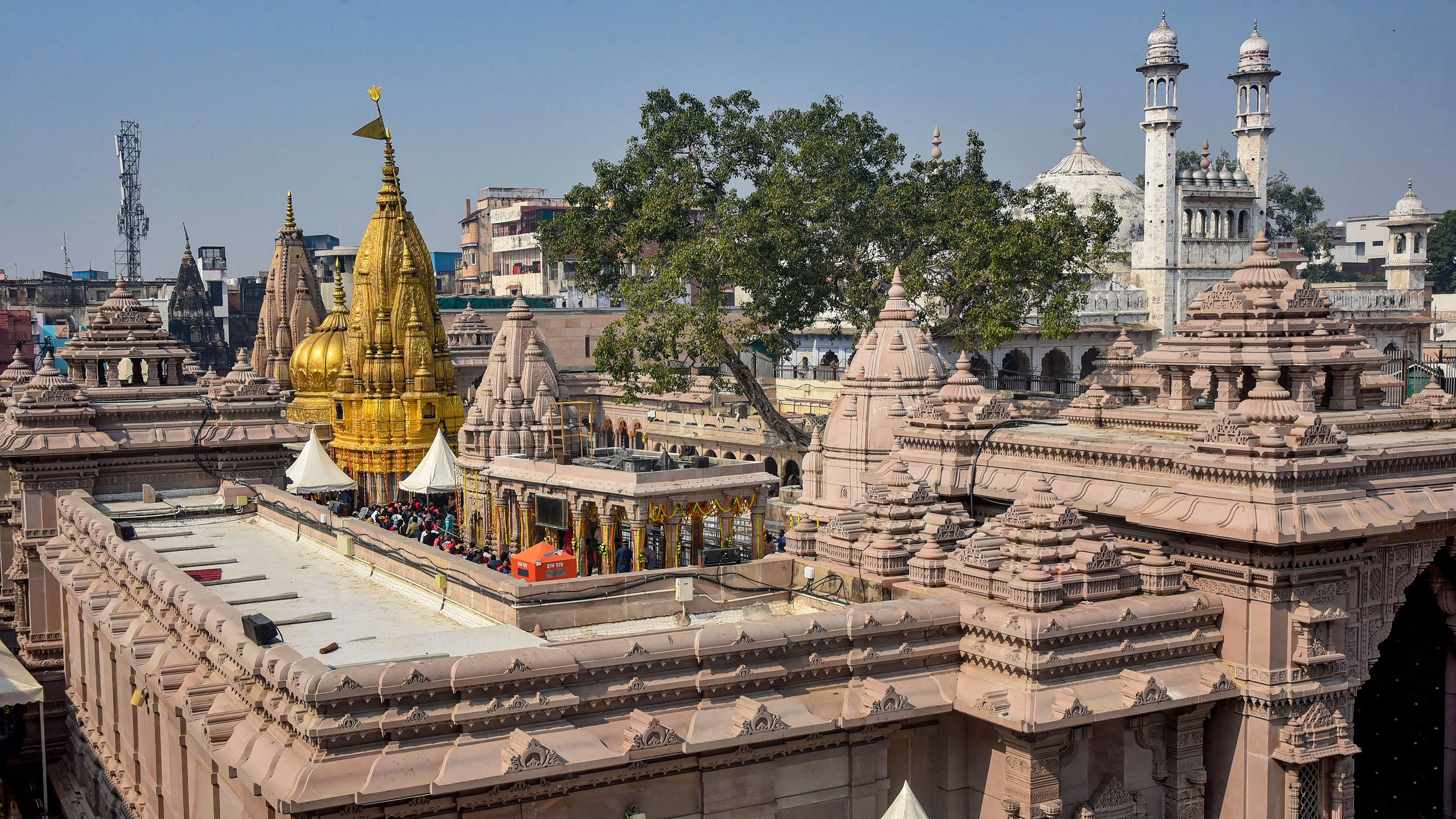
Varanasi: The Gyanvapi mosque, in Varanasi, Monday, Jan. 29, 2024.
Credit: PTI Photo
The 'tehkhana' (basement), popularly known as 'Vyasji ka Tehkhana', where 'puja' began around midnight on Wednesday after a gap of almost 30 years, following the decision of the Varanasi court to allow a plea by the Hindu plaintiffs seeking worshipping rights there, reportedly contained idols of Hindu gods and goddesses and items used in the rituals.
The 'tehkhana' was situated beneath the Gyanvapi Mosque on its south side and Shailendra Pathak Vyas, on whose petition the Varanasi court had passed the order on Wednesday, had contended that his family had been performing 'puja' there since the British period.
He also claimed that his father Somenath Vyas used to perform 'puja' there till October 1993 after which the then Mulayam Singh Yadav government erected a barricade there and barred his entry.
Shailendra said that there were four 'tehkhanas' in the Gyanvapi Mosque one of which was under the possession of his father.
According to the sources, the 'tehkhana' was opened around 11 PM on Wednesday in the presence of senior district officials, seers and the officials of the Kashi Vishwanath Temple Trust. It was cleaned and then purified with the sacred waters from Ganga.
Acharya Ganeshwar Dravid, who had led the consecration rituals at the Ram Temple in Ayodhya on January 22, put a 'kalash' there after which the 'puja' of ''Gauri-Ganesh' was performed amid chanting of vedic mantras.
Sources said that 'aarti' would be performed at the 'basement' five times a day. A large number of devotees had also visited the place after it was opened.